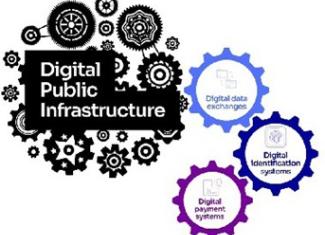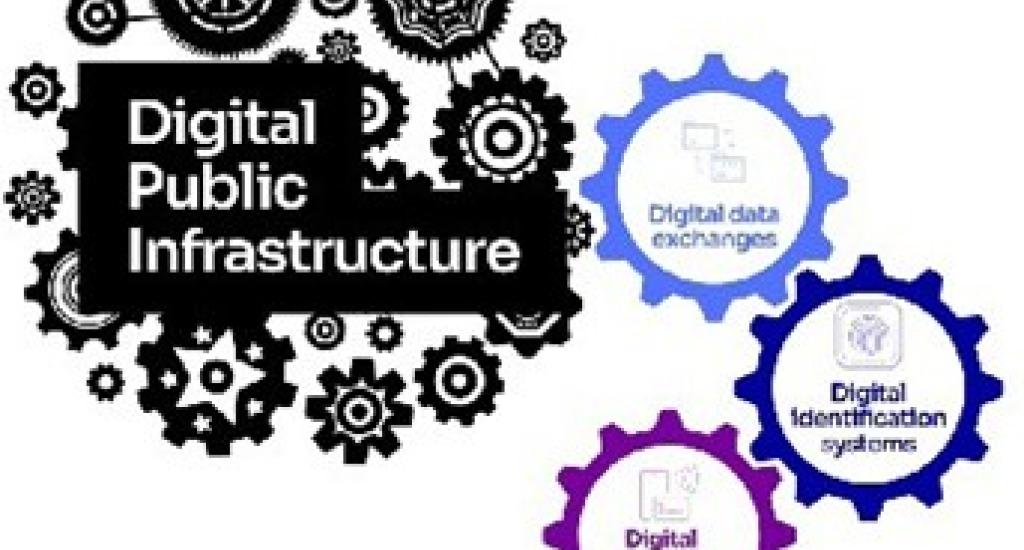Digital public infrastructure: Unlocking South Africa’s path to inclusive growth

In today’s fast-changing technological world, Digital Public Infrastructure (DPI) plays a vital role in driving socio-economic development. It encompasses foundational digital systems like digital infrastructure, digital identity frameworks, payment systems, and data exchange platforms that enable seamless interactions between governments, businesses, and citizens. These tools enhance service delivery, promote economic participation and foster social inclusion. For South Africa, which struggles with challenges such as inequality, unemployment and inefficient public services, DPI offers a transformative solution. Lessons from G20 countries, especially Brazil, highlight how DPI can address these issues and drive meaningful change.
The global significance of DPI
DPI is more than just a technological innovation; it is a socio-economic enabler. It provides the digital backbone for governments to deliver services efficiently, businesses to innovate, and citizens to access opportunities. For example, India’s Aadhaar system, a biometric-based digital identity platform, has transformed service delivery for over 1.4 billion people. Coupled with the Unified Payments Interface (UPI), India has created a robust ecosystem that promotes financial inclusion, reduces welfare programme leakages and drives economic growth.
Brazil’s DPI success: A model for South Africa
Among G20 nations, Brazil stands out for its innovative DPI initiatives. The country’s digital identity system, ICP-Brasil (Infrastructure for Public Keys), and its e-Gov platform have significantly improved citizen services and government efficiency. ICP-Brasil provides a secure digital identity framework that allows citizens to access services such as signing contracts digitally and filing taxes. This system has enhanced convenience, reduced fraud and lowered administrative costs.
While Brazil’s achievements are noteworthy, comparing its approach with other G20 nations provides further insights into best practices and lessons learned.
Indonesia: Decentralisation and inclusivity
Indonesia’s DPI strategy em- phasises decentralisation and inclusivity. Its National Digital Identity system integrates bio- metric data with existing civil registration systems, ensuring that even remote communities are included. Additionally, Indonesia has prioritised digital literacy programmes to ensure that citizens can effectively use DPI platforms.
Challenges and lessons
The experiences of G20 countries reveal several challenges in implementing DPI, many of which are relevant to South Africa:
- Digital divide: Access to digital infrastructure remains un- even, particularly in rural and underserved areas. Bridging this divide requires significant investment in connectivity and digital literacy.
- Data privacy and security: Protecting sensitive citizen data is critical. Countries like the United Kingdom demonstrate the importance of robust data protection frameworks to build trust and prevent misuse.
- Interoperability: Fragmented systems can undermine DPI’s effectiveness. Brazil’s focus on interoperability offers a valuable lesson in creating integrated ecosystems.
- Adoption and usability: High adoption rates depend on user-centric design and effective communication strategies. Citizens must see tangible benefits to embrace DPI platforms.
- Policy and governance: Strong policy frameworks and governance structures are essential to guide DPI implementation and ensure accountability.
DPI in the South African context
South Africa faces unique challenges that make DPI an essential tool for transformation. With one of the highest levels of inequality globally, high youth unemployment rate and persistent inefficiencies in public service delivery, the country needs innovative solutions to drive inclusive growth and development.
Addressing inequality
DPI can reduce inequality by ensuring that all citizens have access to essential services. A robust digital identity system can enable marginalised communities to access social grants, healthcare and education without bureaucratic hurdles.
Integrating DPI with mobile platforms can extend services to even the most remote areas, ensuring no one is left behind.
Tackling unemployment
DPI can foster entrepreneurship and financial inclusion, addressing unemployment. Platforms like India’s UPI can enable small businesses to accept digital payments, access credit, and participate in the formal economy. Additionally, digital skills training programmes can equip young people with the tools needed to thrive in a digital economy.
Enhancing service delivery
South Africa’s public service delivery has been plagued by inefficiencies and corruption.
DPI can enhance transparency and accountability by digitising processes and reducing human intervention. For example, e-government platforms can
streamline service delivery, enabling citizens to access services online and reducing opportunities for corruption.
Recommendations for South Africa
To harness DPI’s potential, South Africa must adopt a strategic and collaborative approach. The following recommendations can serve as a roadmap:
- Develop a national DPI strategy: A comprehensive strategy should outline the vision, objectives and implementation roadmap for DPI,
prioritising inclusivity, interop- erability and data security. - Invest in digital infrastructure: Bridging the digital divide requires significant investment in connectivity, particularly in rural and under- served areas. Public-private partnerships can play a crucial role in expanding access to high-speed internet.
- Strengthening data protection frameworks: Building trust among citizens requires robust data protection regulations. South Africa has the Protection of Personal Information Act of 2013, and can draw inspiration from the European Union’s General Data Protection Regulation approach to ensure citizen data is secure and used responsibly.
- Promote digital literacy: Digital literacy programmes should be integrated into the education system and targeted at marginalised communi- ties to ensure citizens can effectively use DPI platforms.
- Foster collaboration: DPI development requires collaboration between government, the private sector and civil society. Multi-stakeholder partnerships can drive innovation, ensure sustainability, and maximise impact.
- Leverage existing platforms: South Africa can build on existing initiatives, such as the South African Social Security Agency payment system, to create an integrated DPI eco-system.
- Focus on user-centric design: DPI platforms must be intuitive and accessible to ensure high adoption rates.
Engaging citizens in the design process can help create solutions that meet their needs.
Call to action
Government officials, policy-makers and technology experts must prioritise DPI development, recognising its transformative potential. The private sector must step up as a partner in innovation and investment, while civil society must advocate for inclusivity and accountability. Together, South Africa can build a digital public infrastructure that drives economic growth, fosters social inclusion, and ensures every citizen can thrive in a digital world.
*Dr Ayanda Madyibi is an Information and Digital Technology Specialist at Eastern Cape Socio-Economic Consultative Council, an entity of the Office of the Premier, Eastern Cape.






